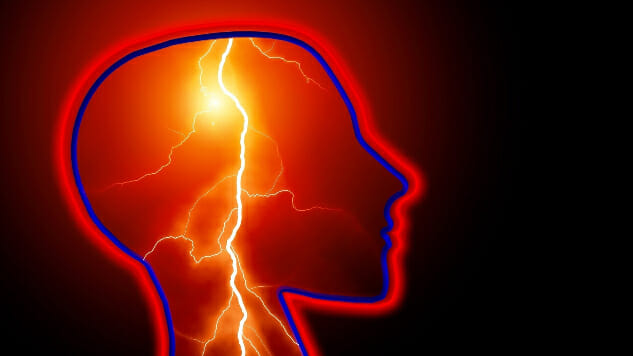Beginner’s Guide to Seizures
Photo below by Gerd Altmann/Pixabay
This article is not meant to diagnose or provide medical advice—that responsibility lies with physicians. The author is not a licensed medical professional.
I woke to this weird gurgling. Reaching out, I felt my wife shaking, juddering. I flicked on the light: she was pale, her lips were blue, her breathing irregular, her jaw clenched. My first thought was, heart attack, so I started CPR and scrambled for the phone. I kept shouting her name, panicking. She wouldn’t respond. I was losing my girl.
The EMTs were mercifully quick. The actual event only lasted a few minutes, but she was out cold for 20 after that. “You’ve had a fit,” one medic explained casually, addressing her sleepy bewilderment at a bedroom full of strange men. She was confused for a good half-hour.
“Fit” is a colloquial label for an epileptic convulsion (in this case, a tonic-clonic seizure). Fortunately, the doctors can’t find any underlying issues, but that’s pretty standard. Don’t convulsions and epilepsy mean something is really wrong? If I’d have known more, things would have been much easier. Welcome to the seizure, our scariest medically humdrum oddity.
What is a Seizure?
Imagine the brain is a football stadium, the fans are neurons. There’s a ridiculous play—the crowd goes wild—everyone gets caught up in The Wave. Sometimes a few fans have had one too many beers beforehand and excite up a wave all by themselves. A seizure is just like that; it’s a self-propagating wave of electrical activity in the brain.
There are many different types of seizures, with symptoms ranging from full-blown convulsions to just vacantly staring off into space for a few seconds. A tonic-clonic (grand mal) is the classic epileptic event. It’s characterized by a period of rigidity followed by convulsive twitching. The person loses consciousness, and when they wake up they have no clue what’s going on.
Everyone has the potential for a seizure. Some have naturally lower thresholds than others; margins lessen due to binge drinking, illnesses, medications, drug abuse, lack of sleep, irregular blood-sugar levels and a host of other factors. In some instances, structural abnormalities in the brain are to blame—that includes tumors or damage, but usually this isn’t the case.
In 60 to 70 percent of seizure patients, testing does not reveal a cause. But an estimated one in 26 people will be diagnosed with an epileptic seizure over the course of their life.
The First Fitting: What to Expect
The diagnosis of epilepsy is normally declared after multiple attacks. The first time someone has a seizure it’s important that they receive emergency treatment. If something is really wrong, it will be detected. There are several diagnostic tests, including blood work to rule out infections, an EEG (electroencephalogram) searching for the footprint of The Wave and an MRI to look at physical structure.
-

-

-

-

-

-

-

-

-

-

-

-

-

-

-

-

-

-

-

-

-

-

-

-

-

-

-

-

-

-

-

-

-

-

-

-

-

-

-

-









































